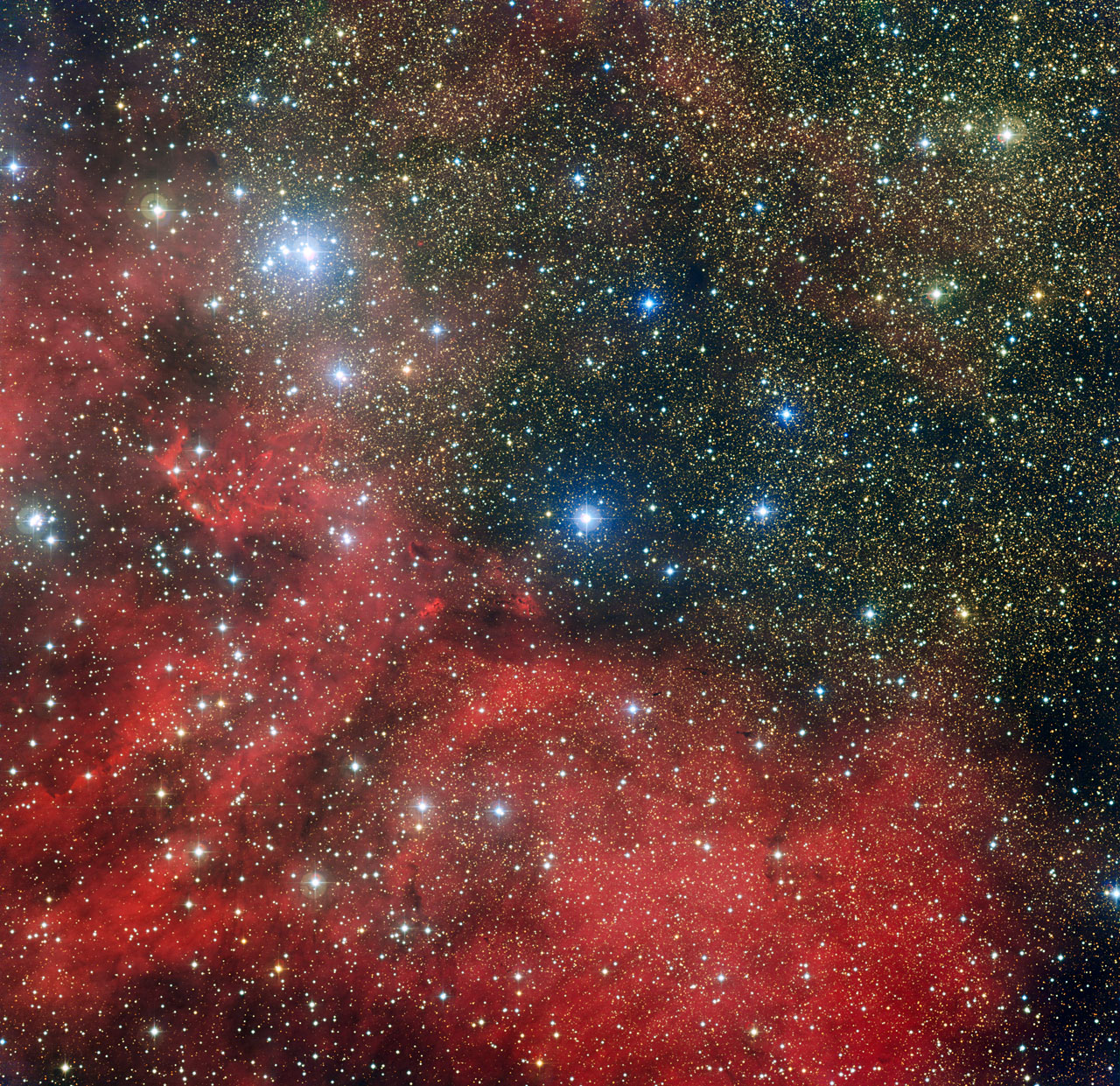

A star cluster shines in this stellar image from the European Southern Observatory (ESO). The region in question can be found approximately 5,500 light-years from Earth in the Serpens constellation.
Called NGC 6604, the cluster lurks within close proximity to the Eagle Nebula, which is, by far, the larger and more famous of the two. In fact, some might say NGC 6604 is pretty obscure. Contrarily, it contains nearly one hundred very bright stars, seen toward the upper left, that hang near the top of of the size spectrum.
The cluster is certainly impressive in its own right, but it is truly set apart by the surrounding nebula. It forms when the hot, blue-white stars expel large amounts of ultraviolet radiation via stellar winds; when this radiation comes in contact with hydrogen gas content, electrons are knocked clear of their atoms for a brief span of time, before they rejoin. This process is called ionization, and it ultimately generates emission nebulae, which are often accompanied by dark nebulae as well.
According to the ESO,
The bright stars are easily seen in a small telescope and were first catalogued by William Herschel in 1784. However, the faint gas cloud escaped attention until the 1950s when it was catalogued by Stewart Sharpless on photographs from the National Geographic-Palomar Sky Atlas.
The cluster’s hot young stars are helping a new generation of stars to form in NGC 6604, by collecting star-making material into a compact region with their strong stellar winds and radiation. This second generation of stars will quickly replace the older generation, as although the brightest young stars are massive, they consume their fuel copiously and live short lives.
Aside from aesthetics, NGC 6604 has other reasons to draw the gaze of astronomers, as it has a strange column of hot ionised gas emanating from it. Similar columns of hot gas, which channel outflowing material from young star clusters, have been found elsewhere in the Milky Way and other spiral galaxies, but the example in NGC 6604 is relatively nearby, allowing astronomers to study it in detail.
This particular column (often referred to by astronomers as a “chimney”) is perpendicular to the galactic plane and stretches an incredible 650 light-years in length. Astronomers think that the hot stars within NGC 6604 are responsible for producing the chimney, but more research is needed to fully understand these unusual structures
See a larger image here.